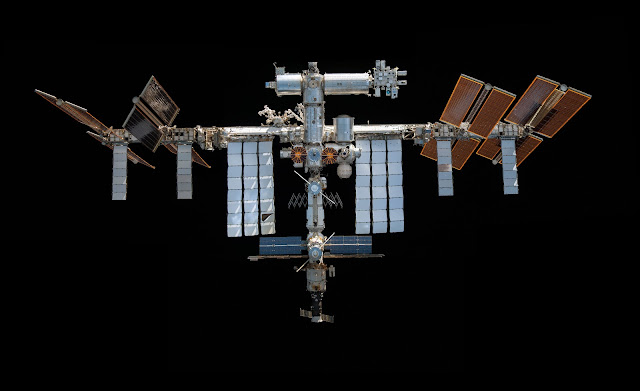Martian Volcanoes | United Arab Emirates Hope Mission
Olympus Mons (Latin for Mount Olympus) is an enormous shield volcano on the planet Mars (located in the middle of this image, left of center). The volcano has a height of over 21.9 km (13.6 mi or 72,000 ft) as measured by the Mars Orbiter Laser Altimeter (MOLA) on NASA's Mars Global Surveyor (MGS). Olympus Mons is about two and a half times Mount Everest's height above sea level. It is the largest and highest mountain and volcano of the Solar System and is associated with the Tharsis Montes, a large volcanic region on Mars.
Three other major Martian volcanoes visible in this image are Arsia Mons (in the south, lower right), Pavonis Mons (right of center) and Ascraeus Mons (in the north, upper right).
The Emirates Mars Mission is a United Arab Emirates Space Agency uncrewed space exploration mission to Mars. The Hope orbiter was launched on July 19, 2020, and went into orbit around Mars on February 9, 2021. The mission design, development, and operations are led by the Mohammed bin Rashid Space Centre (MBRSC). The spacecraft was assembled in the United States at the University of Colorado Boulder's Laboratory for Atmospheric and Space Physics (LASP), with support from Arizona State University (ASU) and the University of California, Berkeley.
(Source: Wikipedia)
Technical notes: Color composite made from image data captured with the EXI camera in visible light wavelengths. Approximate natural color.
Image Credit: Emirates Mars Mission/EXI/Jason Major
Image Date: August 9, 2021
Release Date: January 22, 2022
#NASA #Mars #Planet #RedPlanet #UAE #Dubai #Hope #Orbiter #Spacecraft #Science #Geology #Volcanoes #مشروع الإمارات لاستكشاف المريخ #SolarSystem #Exploration #JasonMajor #مسبار الأمل #Emirates #UnitedArabEmirates #STEM #Education








